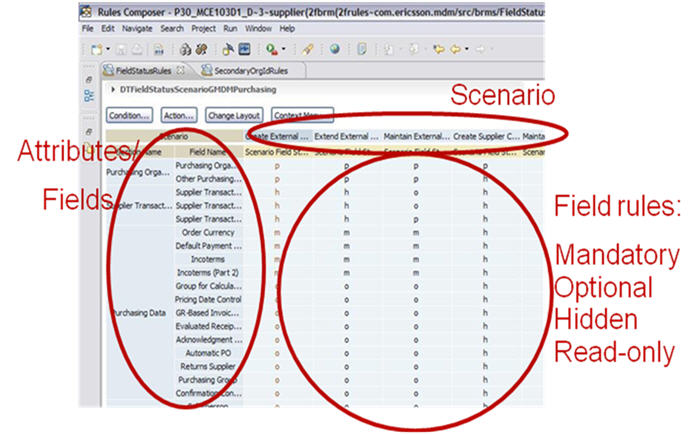In my SAP TechEd Presentation PMC 114, I presented 5 “coolest” BPM customer implementations that customers have shared over the last 18 months.
One of the coolest implementations I profiled was Ericsson’s global supplier master data create and update processes. This implementation leveraged SAP NetWeaver Master Data Management (MDM), SAP NetWeaver Business Process Management (BPM), and SAP NetWeaver Business Rules Management (BRM) to streamline and automate a global business process that allowed business users to directly enter new supplier master data into Ericsson’s systems without having to work through a master data governance team.
Streamlining of data governance processes for master data is among one of the most common applications of SAP’s BPM tooling. What makes Ericsson’s implementation stand out is their clever use of business rules to add intelligence to the user experience. By making the UI smarter and able to guide business users, Ericsson is able to eliminate an extra manual step by a master data administrator that most other MDM implementations require.
One of the complexities of trying to manage business partner data of customers or partners globally is dealing with country or region specific fields such as tax numbers or payment methods. In a data governance process, this typically results in needing a master data specialist for a specific country to be in charge of entering and checking locally-required fields for a new business partner master data record. And, a few run of the mill BPM processes I’ve seen implemented by some SAP partners directly orchestrates this process step into the BPMN flow.
In the case of Ericsson, business rules were added to the BPM process and managed in SAP NetWeaver BRM to help guide business users in knowing what required fields for suppliers were according to the countries they are based in, and serve for Ericsson. These rules covered data such as payment method, banking details, tax numbers and withholding requirements, business partner roles in SAP, DUNS numbers, and vendor returns. By adding business rules in BRM, country-specific specialists no longer need to be involved in every new supplier create request. Instead they can focus on refining business rules whenever country requirements change, and resolving exceptions.

See the screencam video of Ericssons user experience below to see how these business rules provide immediate feedback to business users, thus making the user experience more friendly for business users.
